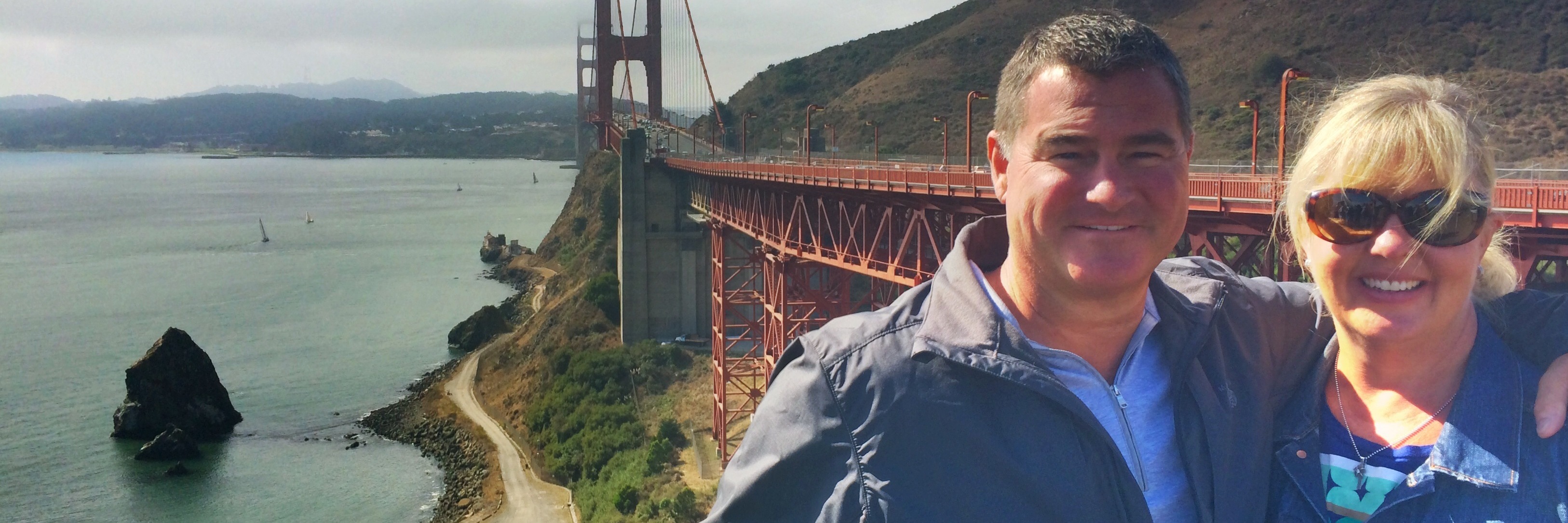Joy Aldrich of Seattle, Washington joined Hereditary Neuropathy Foundation as Advocacy Director to focus on the growth of HNF’s online support resources for CMT patients and caregivers and to advocate for patient recruitment in clinical trials through Global Registry for Inherited Neuropathies (GRIN), a patient clinical registry.
I’ve tried hundreds of different versions of my story to try to get people to understand. “I walk funny because I have Charcot-Marie-Tooth, also known as CMT. It’s named after the three doctors who discovered it. It’s a type of muscular dystrophy – but not really… It’s a genetic, progressive, neuromuscular disease that affects my legs and feet, arms and hands – and my diaphragm. It makes me tired. I’m sometimes in a lot of pain. Currently there is no treatment or cure. It’s just something I am living with.” Blah…blah…blah. I can see the person I’m talking with zoning out and I know I’m losing him. That’s hard because I’ve only just recently opened up about my CMT. I want my friends, family and the world to understand why I have struggles and limitations.
I’m 46 years old, and I was diagnosed at 13 years old. It’s been a secret I’ve kept hidden for 33 years.
CMT is by definition a rare disease, affecting –> in the U.S. Before the diagnosis, I tripped and fell a lot. When the pediatrician tapped on my knee to test my reflexes, nothing happened. (I always thought he just must be seeing something I didn’t see because he looked puzzled, but then moved on without commenting.) I was constantly spraining my ankles and bandaging my knees from falling so much. Finally, the CMT diagnosis explained it. But it certainly didn’t do anything to help the situation other than confirm I had a serious disease that would continue to burden me. I became a master of making excuses for why I couldn’t join in activities like volleyball, jogging, aerobics, hiking, walk-a-thons and much more. Social events even upset me, and I became more isolated.
–>
It wasn’t until my disease progressed to the point that I needed braces to help me walk that I could no longer keep my secret. While researching online for bracing options, I discovered the advocacy organization –>. In finding the foundation, I realized I wasn’t alone: Many others felt as I did. I agreed to conduct a letter-writing campaign, letting friends and family know about the diagnosis and why I wear leg braces; doing so helped people understand why I made changes in my life in order to adapt to my CMT.
I even told my family doctor about my diagnosis – something I hadn’t done before and something that was a big deal since that meant it would be documented in my medical records. (I had been warned about the documentation of a pre-existing condition causing problems with insurance since the day I was diagnosed. Hopefully, that’s not an issue any longer.) He took the time to research the disease and to listen to me when I shared how the disease had progressed and was affecting me, and he even offered some really good suggestions. Together, we are both optimistic about the first potential treatment for CMT1A, the most common form of CMT. The drug is PXT-3003, which is being developed by Pharnext, an advanced clinical-stage biopharmaceutical company. I’m excited, and I look forward to the results of the phase III clinical trial later this year.
When I opened up about my story, I thought I was letting go, but I was actually just finding a different way to manage my feelings. The outpouring of support I received gave me the confidence and empowerment to get even more involved in raising awareness and money for “the biggest disease no one has ever heard of.” I’ve raised funds for HNF, written a few awareness articles, and participated in public service announcements for CMT Awareness Month, which is September.
Letting go of the secret allowed me to heal and focus positively on my CMT and all that goes with it. I committed to a low-carb diet plan combined with very moderate cardio activity, and I’ve lost a lot of weight since August. I’m more happy than I’ve been in years, and I’m proud to now let people know all about CMT. I’m still working on how to best tell my story, but that will come in time.
We want to hear your story. Become a Mighty contributor here.


